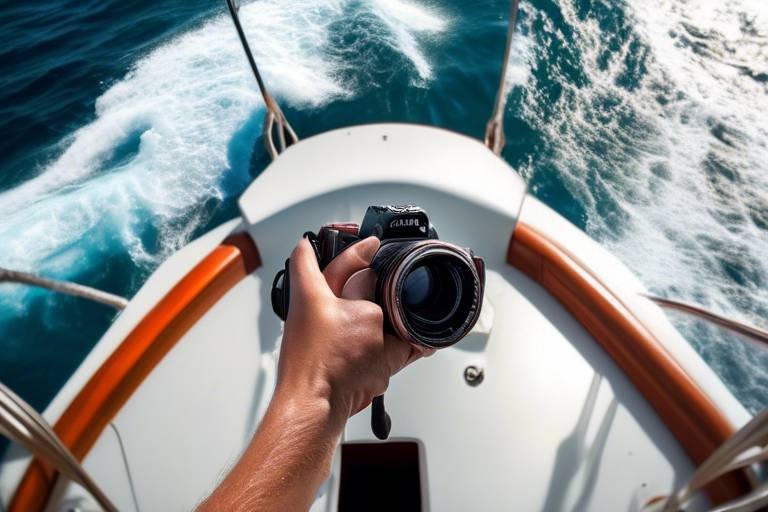What are safety risks in skydiving?
Skydiving is often seen as an exhilarating adventure, a thrilling leap from the sky that promises an adrenaline rush like no other. However, beneath the excitement lies a reality that every skydiver must face: the safety risks associated with this extreme sport. While many enthusiasts jump with confidence, it’s essential to understand the potential hazards that could arise during a jump. From equipment malfunctions to unpredictable weather conditions and human errors, each jump carries its own set of risks that can significantly impact safety. In this article, we’ll dive deep into these risks, exploring how they can affect skydivers and what measures can be taken to mitigate them. So, buckle up (or rather, strap on your parachute) as we explore the thrilling yet perilous world of skydiving!
When it comes to skydiving, the equipment you use is your lifeline. Parachutes, harnesses, altimeters, and other gear are crucial for a successful jump. However, any malfunction can lead to serious consequences. Common equipment issues include:
- Parachute Deployment Failures: A parachute may fail to open due to various reasons, including tangled lines or a faulty deployment system.
- Harness Failures: If a harness is not secured properly, it can lead to dangerous situations during the freefall or landing.
- Altimeter Malfunctions: An inaccurate altimeter can mislead a skydiver about their altitude, affecting when to deploy the parachute.
Each of these issues can have catastrophic outcomes, emphasizing the importance of regular equipment checks and maintenance. Skydivers should always conduct thorough pre-jump inspections and ensure that they are using reliable, well-maintained gear.
The weather can make or break a skydiving experience. It’s not just about sunny skies; weather plays a crucial role in ensuring safety during a jump. Factors such as wind speed, visibility, and the presence of storms can significantly affect jump safety. Before any dive, it’s essential to conduct thorough weather assessments to avoid dangerous conditions.
Understanding wind speed and direction is vital for safe skydiving. High winds can alter a skydiver's trajectory and make landing challenging. For instance, a strong headwind can slow descent, while tailwinds can speed it up, potentially leading to overshooting the landing zone. In contrast, crosswinds can push a skydiver off course, making it crucial to assess wind conditions before jumping.
Crosswinds can pose significant challenges for skydivers during landing. Recognizing these winds is essential for a safe descent. A skydiver must be aware of how to navigate crosswinds by adjusting their body position and controlling their parachute's direction. Failure to do so can result in landing in unsafe areas, which can lead to injuries.
Thunderstorms are another serious concern for skydivers. The dangers associated with jumping in or near stormy weather include turbulent winds, lightning, and reduced visibility. It's vital for skydivers to adhere to strict protocols to avoid such conditions. A good rule of thumb is to stay grounded if thunderstorms are forecasted within a certain radius of the jump zone.
Visibility is essential for safe skydiving. Poor visibility can make it difficult for skydivers to assess their surroundings, identify landing zones, and make informed decisions during a jump. Factors that can affect visibility include:
- Fog
- Rain
- Smoke from nearby fires
Skydivers must prioritize clear visibility to ensure a safe and controlled descent. If conditions are not ideal, it’s best to postpone the jump.
Despite all safety measures, human error remains a leading cause of accidents in skydiving. Mistakes can occur at any stage of the jump, from pre-jump preparations to the actual descent. Common errors include misjudging altitude, failing to deploy the parachute on time, or not following proper landing techniques. Training plays a crucial role in reducing these errors.
Proper training is critical for skydiving safety. Inadequate training can lead to a lack of understanding about equipment use, emergency procedures, and environmental assessments. Certification programs for novice jumpers are essential to ensure that they are well-prepared for their first jump.
Skydiving can present high-pressure situations that require quick thinking and decisive actions. Stress can impact decision-making, leading to mistakes that could have been avoided. Mental preparedness is crucial for skydivers to handle unexpected events during a jump. Regular training and simulations can help develop the necessary skills to make sound decisions under pressure.
1. What should I do if my parachute doesn't deploy?
Remain calm, pull your reserve parachute, and follow your training protocols.
2. How can I ensure my equipment is safe?
Conduct thorough pre-jump inspections and ensure your gear is maintained regularly.
3. Is there a safe weather condition for skydiving?
Clear skies, low winds, and good visibility are ideal conditions for a safe jump.
4. Can I skydive if I have never done it before?
Yes, but you should undergo proper training and go through a certification program.
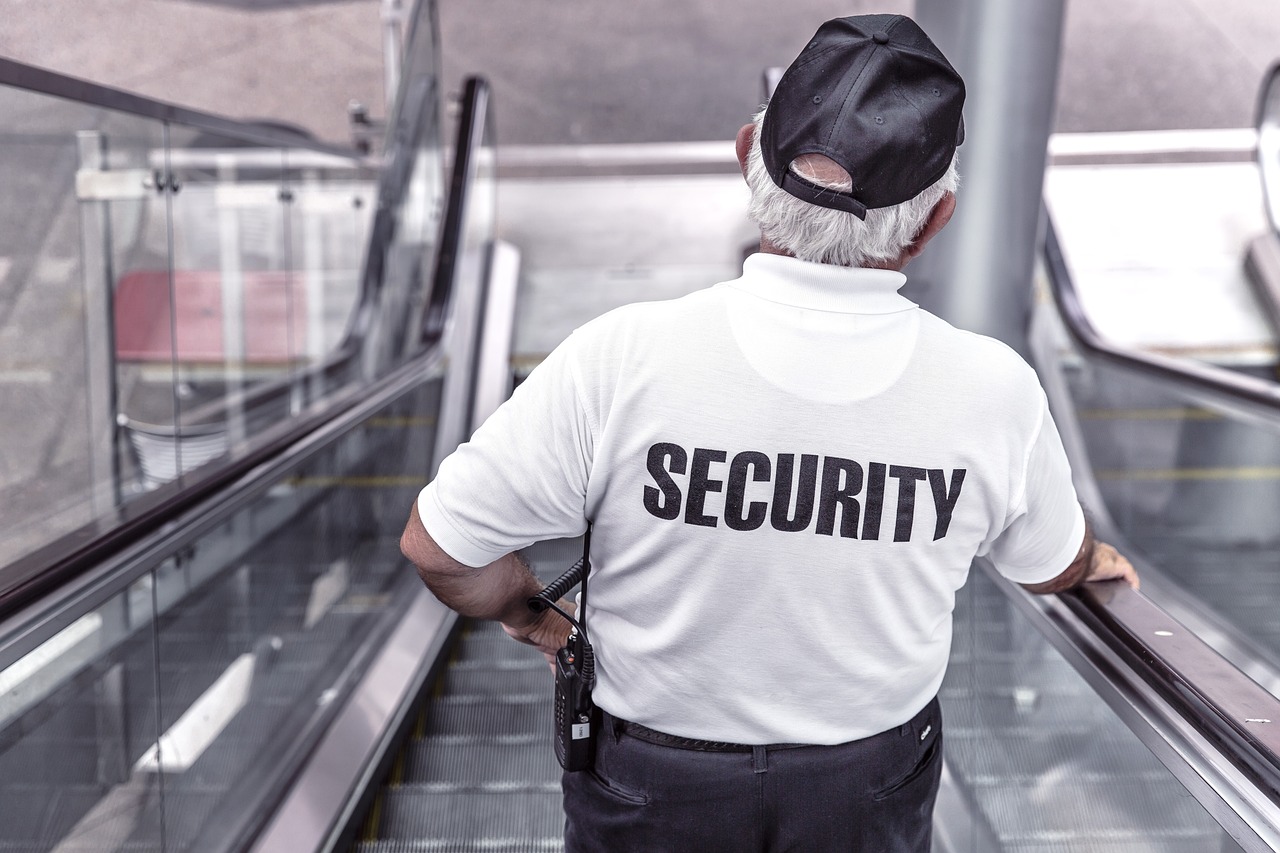
Equipment Malfunctions
Skydiving is an exhilarating sport that offers a unique rush of adrenaline as you leap from an aircraft and free-fall towards the earth. However, this thrill comes with inherent risks, particularly when it comes to . The gear used in skydiving—parachutes, harnesses, and altimeters—are designed to ensure a safe descent, but any failure in this equipment can lead to serious consequences. Understanding these potential malfunctions is crucial for both novice and experienced jumpers alike.
One of the most critical pieces of equipment is the parachute itself. Malfunctions can occur for various reasons, such as manufacturing defects, wear and tear, or improper packing. A malfunctioning parachute can lead to a range of issues, from a partial deployment to a complete failure to open. For instance, if a parachute does not deploy correctly, the skydiver may experience a rapid descent, which can result in severe injuries or even death. Therefore, it is essential for jumpers to regularly inspect their gear and ensure that it is in optimal condition.
Moreover, reserve parachutes are a mandatory safety feature in skydiving. These backups can save lives in case the main parachute fails. However, if the reserve parachute is not properly maintained or if the deployment system malfunctions, it may not open when needed. This emphasizes the importance of thorough pre-jump checks, where jumpers should verify that both their main and reserve parachutes are functioning correctly.
In addition to parachutes, altimeters play a vital role in ensuring a safe jump. They help skydivers gauge their altitude and determine when to deploy their parachute. A malfunctioning altimeter can mislead a jumper about their altitude, potentially causing them to deploy too early or too late. This is why it is imperative to use reliable equipment and to be familiar with how to read and interpret altimeter readings accurately.
To mitigate the risks associated with equipment malfunctions, skydiving organizations often implement rigorous safety protocols. These may include:
- Regular equipment inspections and maintenance
- Training programs focused on emergency procedures
- Mandatory gear checks before each jump
By adhering to these safety measures, skydivers can significantly reduce the likelihood of equipment malfunctions. Ultimately, the key to a safe skydiving experience lies in a combination of well-maintained gear, comprehensive training, and a proactive approach to safety.
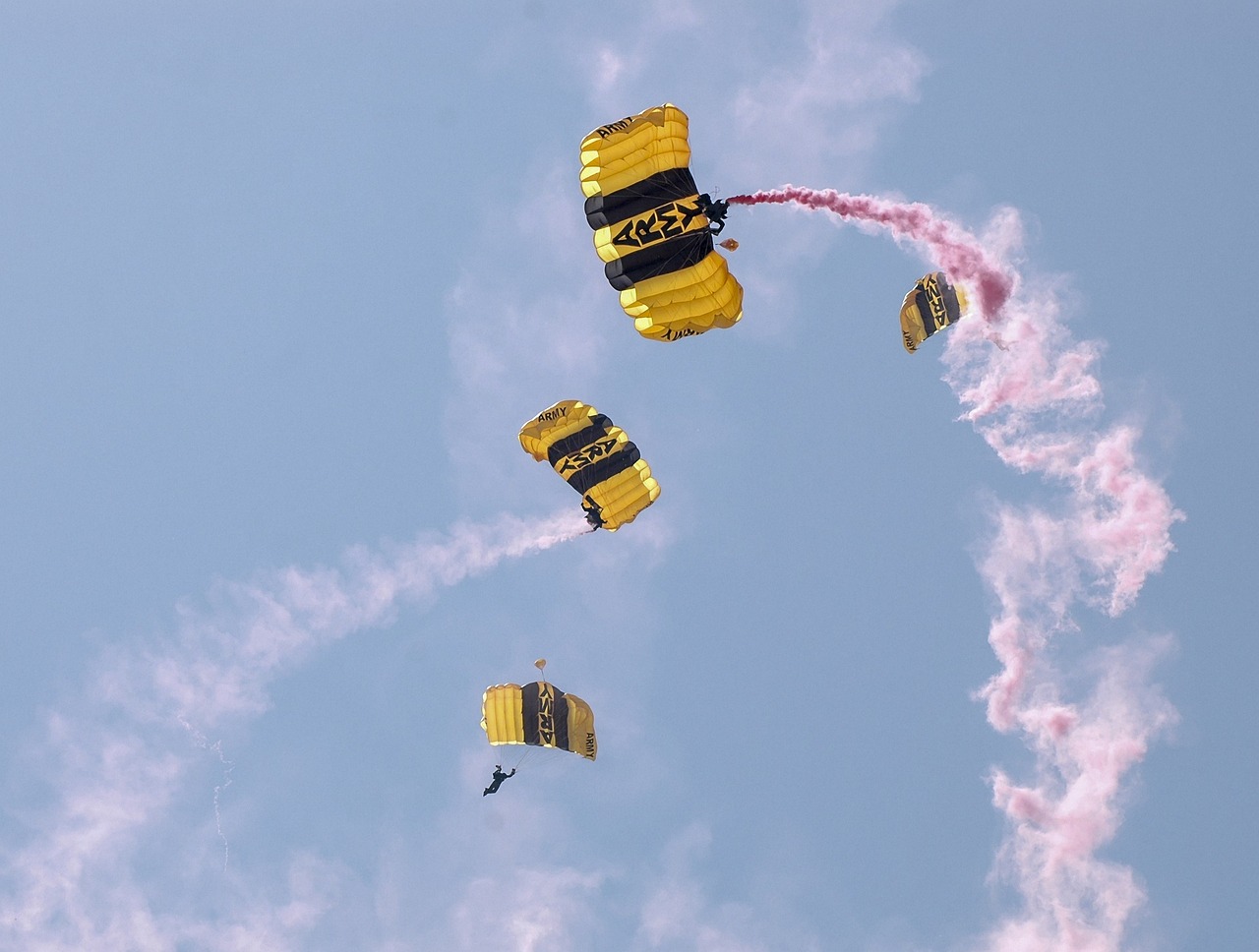
Weather Conditions
When it comes to skydiving, the can be your best friend or your worst enemy. Imagine gearing up for the thrill of a lifetime, only to find that the skies have turned hostile. Weather plays a crucial role in ensuring a safe and enjoyable jump, and understanding its impact is essential for every skydiver. From wind patterns to visibility, each element can drastically alter your experience in the air.
Before every jump, it's imperative to conduct a thorough weather assessment. This includes checking for any potential hazards that could affect your safety. For instance, strong winds can change the trajectory of your descent, while poor visibility can make it challenging to spot your landing zone. Let's break down some of the key weather factors that every skydiver should be aware of:
| Weather Factor | Impact on Skydiving |
|---|---|
| Wind Speed | Can affect jump trajectory and landing accuracy. |
| Wind Direction | Influences descent path and landing zone selection. |
| Thunderstorms | Creates hazardous conditions and should be avoided at all costs. |
| Visibility | Affects the ability to navigate and assess surroundings. |
One of the most critical aspects of weather to consider is wind speed and direction. A gentle breeze can enhance your experience, but gusty winds can throw off your landing. Understanding how to read wind conditions is vital for any skydiver. For example, if the wind is blowing against your descent, it may slow you down, while a tailwind can speed you up. This can lead to unexpected landings if one is not prepared.
Wind speed and direction can change rapidly, so it's essential to stay vigilant. Skydivers should always check local forecasts and, ideally, consult with experienced jumpers or instructors who can provide real-time insights. Knowing how to interpret wind indicators at the drop zone can be a game-changer. For instance, flags, smoke, and even other skydivers' movements can give you clues about the wind conditions.
Crosswinds are another significant concern. These winds blow perpendicular to your landing path and can make it challenging to land safely. If you're approaching the landing zone and notice a crosswind, you need to adjust your approach accordingly. This might mean entering a side slip or adjusting your body position to maintain control. Recognizing and adapting to crosswinds can be the difference between a smooth landing and a rough one.
Now, let’s talk about thunderstorms. These are not just a minor inconvenience; they can be downright dangerous. Jumping in or near a storm can lead to severe turbulence, lightning strikes, and even unexpected downdrafts. It’s crucial to have a solid understanding of storm patterns and to always err on the side of caution. If you see dark clouds rolling in or hear thunder rumbling, it’s best to postpone your jump. Remember, safety should always come first.
Lastly, visibility is essential for a successful jump. Poor visibility can make it challenging to identify your landing zone, assess the surrounding environment, and make critical decisions. Factors like fog, rain, or low-hanging clouds can severely limit your sight. As a skydiver, you need to be able to see where you’re going and what’s around you. Always check the visibility conditions before your jump, and if they’re not ideal, consider waiting for a clearer day.
In conclusion, weather conditions can significantly impact the safety and enjoyment of your skydiving experience. By understanding the various weather factors, staying informed, and making smart decisions, you can mitigate risks and focus on the thrill of the jump. Always remember, the sky is not just your playground; it’s also a dynamic environment that requires respect and awareness.
- What should I check before a skydive?
Always check the weather, including wind speed, direction, and visibility. - Can I skydive in any weather?
No, certain weather conditions such as thunderstorms or high winds can be dangerous. - How do I know if the conditions are safe?
Consult with your instructor and rely on their expertise and local weather reports.
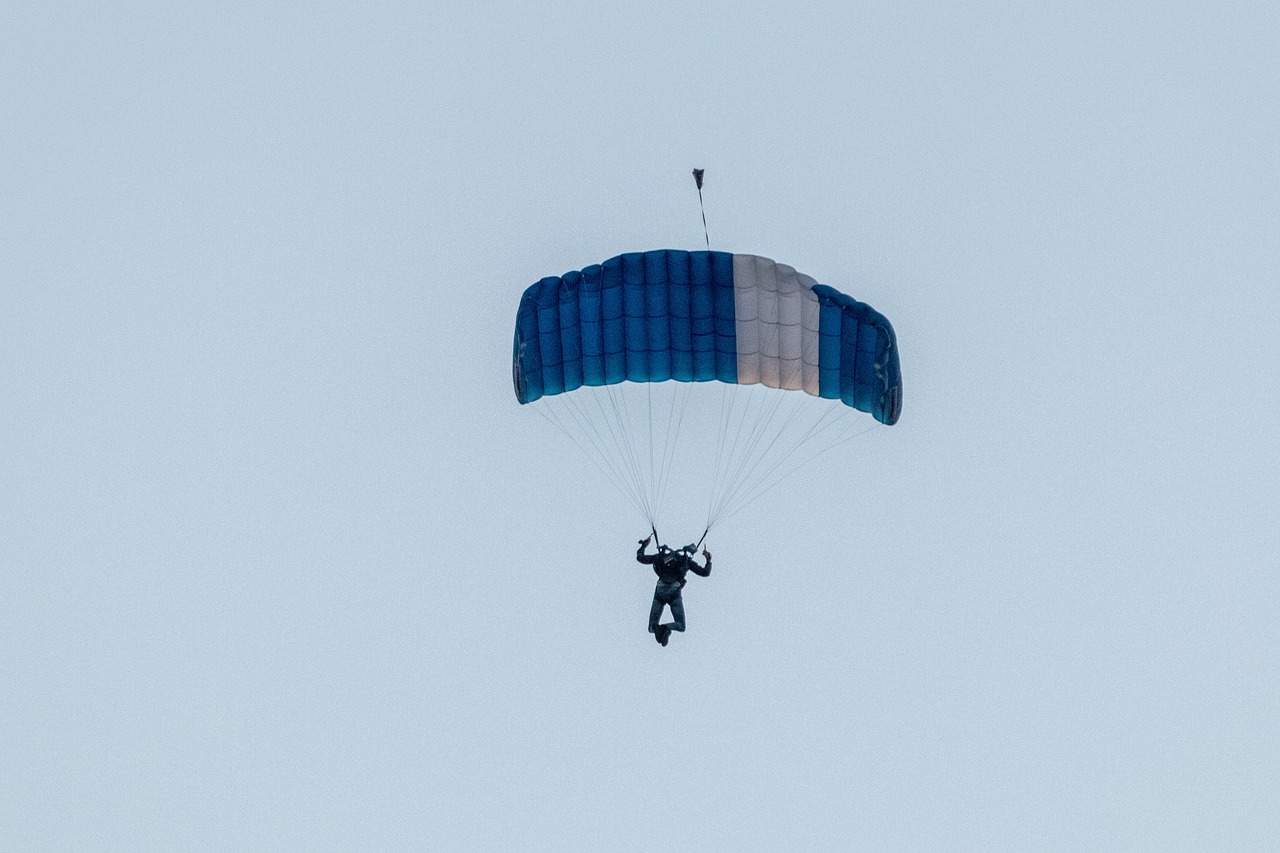
Wind Speed and Direction
Understanding wind speed and direction is vital for ensuring a safe skydiving experience. When you’re free-falling from thousands of feet in the air, the last thing you want to worry about is whether the wind is going to send you off course. Just like a sailor relies on wind patterns to navigate the seas, skydivers must be acutely aware of how the wind can affect their descent. The wind can change rapidly, and its influence on your jump trajectory can be the difference between a smooth landing and a dangerous situation.
Before each jump, skydivers should receive a detailed weather briefing that includes information about wind conditions. This briefing typically covers:
- Ground Wind: The wind speed and direction at the landing zone.
- Altitude Wind: Changes in wind speed and direction at different altitudes.
- Thermals: Updrafts caused by the sun heating the ground, which can significantly alter descent paths.
To help visualize the impact of wind, consider this: imagine you’re a leaf caught in a gust of wind. If the wind is blowing steadily in one direction, you may drift gently along with it. However, if the wind shifts unexpectedly, you could be blown off course, landing far from your intended destination. This is exactly what can happen to a skydiver if they don’t account for wind changes during their descent.
Additionally, skydivers must be aware of crosswinds, which can complicate landing. Crosswinds occur when wind blows perpendicular to the landing direction. This can make it challenging to align with the landing zone, leading to potential hazards. Recognizing and adjusting for crosswinds is essential for a safe landing.
Furthermore, jumping in conditions with high wind speeds can create turbulence, which can be disorienting and dangerous. It’s crucial to assess wind conditions not just at the ground level but also at higher altitudes. Wind can increase with altitude, leading to a significantly different experience than what was anticipated. For example, a calm day at the ground level can quickly turn into a windy challenge at 10,000 feet.
In summary, understanding wind speed and direction is not just a technical necessity; it’s a fundamental part of skydiving that can’t be overlooked. By staying informed and prepared, skydivers can navigate these elements, ensuring a safer and more enjoyable experience. Always remember, the sky is not just your playground; it’s a dynamic environment that requires respect and understanding.
Q: How does wind speed affect my jump?
A: Wind speed can influence your descent trajectory and landing zone. Higher wind speeds can create turbulence and affect your ability to control your landing.
Q: What should I do if I notice changing wind conditions?
A: If you notice changing wind conditions, communicate with your instructor and consider delaying your jump until conditions improve.
Q: Are there specific wind conditions that are considered unsafe for skydiving?
A: Yes, generally wind speeds over 20 mph or strong crosswinds can be unsafe for jumping. Always consult with your instructor regarding safe conditions.

Crosswinds
Crosswinds can be one of the most challenging elements a skydiver faces during their descent. Imagine you're soaring through the air, the ground rushing up towards you, and suddenly, a gust of wind pushes you sideways! This scenario is not just a figment of imagination; it’s a reality that can lead to serious safety risks if not managed properly. Crosswinds occur when wind blows perpendicular to the direction of your jump, and they can significantly impact your landing trajectory.
When a skydiver is in freefall, they are primarily at the mercy of the wind. Crosswinds can alter your path, making it difficult to reach your intended landing zone. This is particularly concerning when you are getting close to the ground, as misjudging your landing can lead to injuries. To mitigate these risks, it’s crucial to be aware of the wind conditions before jumping. Skydivers should always check the wind reports and consult with experienced instructors who can provide insights into how to handle these conditions effectively.
Here are some key points to consider when dealing with crosswinds:
- Approach Angle: Always approach the landing area at an angle that allows you to counteract the crosswind. This might mean adjusting your body position during the descent.
- Landing Technique: Make sure to practice landing techniques that accommodate crosswinds. This includes learning to "crab" your descent, where you angle your body slightly into the wind to maintain control.
- Situational Awareness: Keep an eye on the ground and surrounding environment. Recognizing how the wind is affecting your descent can give you valuable time to adjust your landing strategy.
In addition to these considerations, it’s vital for skydivers to undergo training specifically focused on handling crosswinds. This training can provide practical experience and teach techniques that can make a significant difference in ensuring a safe landing. Remember, the key to a successful jump is not just about the thrill of freefalling; it’s also about making informed decisions and being prepared for the unexpected.
Ultimately, being aware of crosswinds and understanding their implications can turn a potentially dangerous situation into a manageable one. Just like navigating through a stormy sea, skydivers must learn to read the winds and adjust their sails—or in this case, their parachutes—to ensure a safe and enjoyable experience.
Q: What should I do if I encounter crosswinds while descending?
A: If you notice crosswinds during your descent, adjust your approach angle and use techniques learned in training to counteract the wind. Always aim for a controlled landing and be prepared to modify your descent strategy.
Q: How can I prepare for jumping in windy conditions?
A: Prior to your jump, check weather reports and consult with instructors. Training focused on wind conditions will also help you feel more confident in handling crosswinds.
Q: Can crosswinds affect my parachute's performance?
A: Yes, crosswinds can influence your parachute's trajectory and landing zone. Understanding how to manage these winds is essential for safe skydiving.

Thunderstorms
When it comes to skydiving, are not just a minor inconvenience; they can be downright dangerous. Imagine free-falling at incredible speeds, only to find yourself caught in the turbulence of a storm. Thunderstorms can bring a cocktail of hazardous conditions, including strong winds, lightning, and heavy rain, all of which can drastically affect a skydiver's safety. It's crucial for jumpers to recognize the signs of an impending storm and to understand why jumping in such weather is a recipe for disaster.
One of the most significant dangers associated with thunderstorms is the strong winds they generate. These winds can shift unexpectedly, creating unpredictable turbulence that can throw even the most experienced skydiver off course. In fact, winds can change direction rapidly, leading to a situation where a skydiver might not land where they intended, or worse, may struggle to control their descent altogether. The impact of these winds can be so severe that they can even cause parachute malfunctions, leading to catastrophic outcomes.
Moreover, thunderstorms are often accompanied by lightning, which poses a severe threat during a jump. The risk of being struck by lightning while free-falling is very real, and the consequences can be fatal. Even if a skydiver manages to avoid direct contact, the electromagnetic interference from a storm can disrupt parachute deployment systems, leading to potential malfunctions. Therefore, it’s essential for skydivers to stay informed about weather conditions and to heed any warnings regarding thunderstorms.
In addition to strong winds and lightning, thunderstorms can also produce heavy rain and hail, which can severely limit visibility. When visibility is compromised, a skydiver may struggle to assess their surroundings, making it difficult to determine the safest landing zone. This lack of visibility can lead to misjudgments and dangerous landings, increasing the risk of injury. As a result, thorough weather assessments are vital before any jump, ensuring that skydivers are aware of the potential for thunderstorms and can make informed decisions.
To ensure safety, it’s essential for skydiving operators to have strict protocols in place regarding weather conditions. This means not only monitoring forecasts but also having the ability to call off jumps at the first sign of thunderstorm activity. Skydivers should always prioritize safety over the thrill of jumping, as the risks associated with thunderstorms far outweigh the excitement of a dive.
In summary, thunderstorms are a serious concern for anyone involved in skydiving. The combination of strong winds, lightning, and poor visibility can create a perilous environment that can lead to accidents and injuries. Always remember: when in doubt, stay on the ground! It’s better to miss a jump than to risk your life in dangerous weather conditions.
- What should I do if I see a thunderstorm while skydiving? - If you notice a thunderstorm developing, it’s crucial to follow your instructor's guidance and return to the ground immediately. Safety is the top priority.
- How can I check weather conditions before a jump? - Always consult with your skydiving center for up-to-date weather reports and forecasts. They will have the latest information regarding potential storms.
- Are there specific signs of an approaching thunderstorm? - Look out for darkening skies, increasing wind speeds, and distant thunder. If you notice these signs, it’s best to avoid jumping.
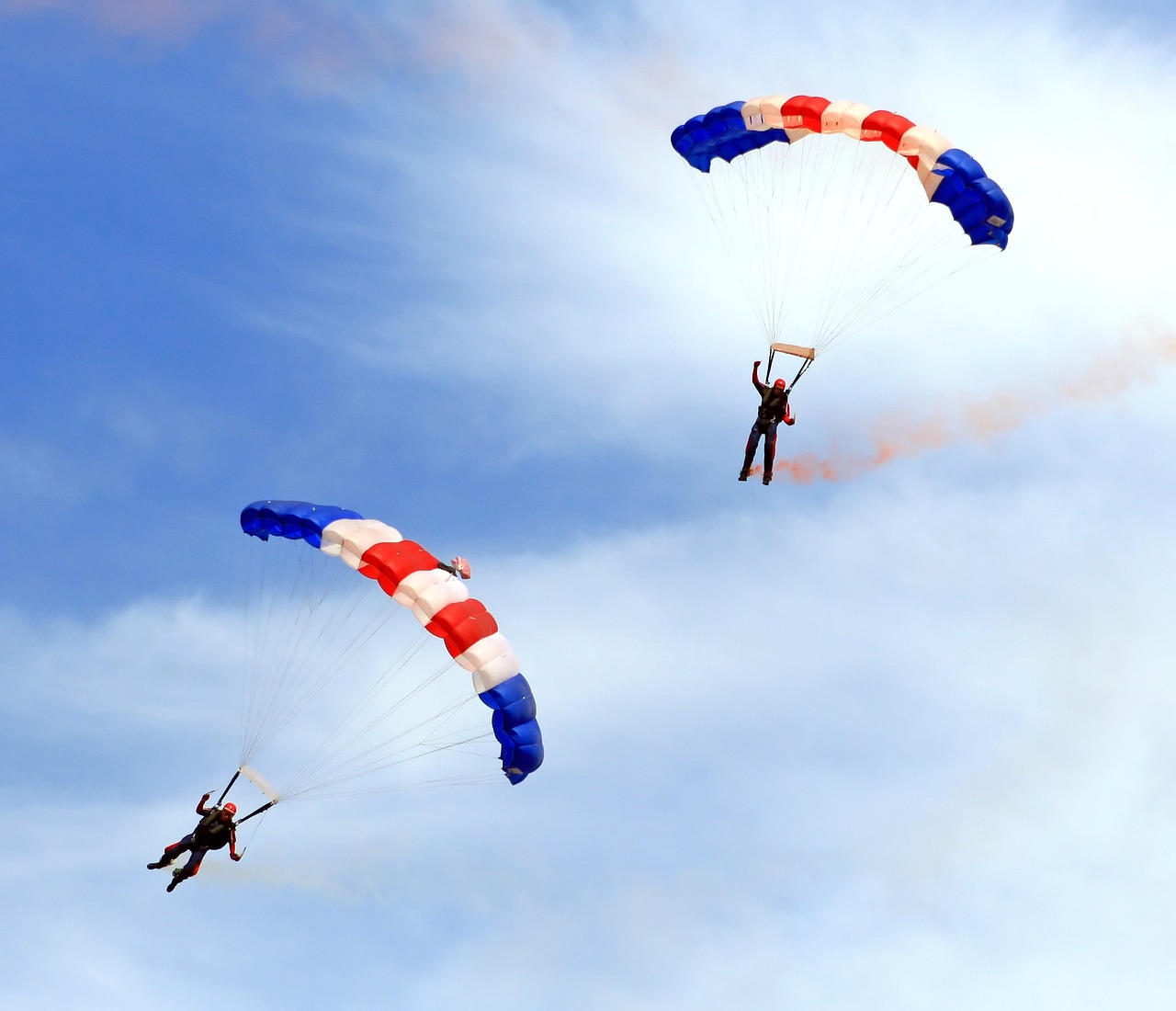
Visibility Issues
When it comes to skydiving, visibility is absolutely crucial. Imagine standing on the edge of a plane, the wind whipping around you, and you're about to leap into the vast blue sky. Now, what if you can't see where you're going? That's a recipe for disaster! Poor visibility can stem from various factors such as fog, clouds, or even smoke from wildfires, making it incredibly difficult for a skydiver to assess their surroundings. Without clear sights, the risk of misjudgment increases exponentially, which can lead to dangerous situations.
During a jump, skydivers rely heavily on their ability to spot landmarks and assess their landing zone. If visibility is compromised, they may struggle to identify safe landing areas, which could result in landing in unsuitable locations, such as on uneven terrain or into obstacles. This is why it’s essential for skydivers to be aware of the visibility conditions before they even think about jumping.
Here are some key visibility issues that skydivers should consider:
- Cloud Cover: Jumping into or through clouds can significantly reduce visibility. Not only does this make it hard to see where you're going, but it can also disorient you, making it difficult to determine altitude and orientation.
- Fog: Fog can roll in unexpectedly, reducing visibility to mere feet. It’s crucial to check weather forecasts and local conditions before jumping.
- Smoke and Pollution: Smoke from nearby fires or high pollution levels can obscure vision. Skydivers should always be aware of the air quality and visibility reports.
In addition to these factors, sun glare can also pose a significant challenge. The sun’s rays can create blinding reflections that make it hard to see clearly. To combat this, many skydivers wear specialized goggles designed to reduce glare and enhance visibility.
To mitigate these visibility issues, it’s imperative for skydivers to conduct thorough pre-jump checks. This includes:
- Checking weather reports for visibility conditions.
- Consulting with experienced instructors about the day's jump conditions.
- Utilizing technology such as GPS devices to help navigate and assess landing zones.
Ultimately, a skydiver’s safety is heavily reliant on their ability to see and assess their surroundings accurately. By understanding the impact of visibility issues and taking proactive measures to address them, skydivers can significantly reduce the risks associated with poor visibility during their jumps.
Q: What should I do if visibility is poor on the day of my jump?
A: If visibility is poor, it's best to postpone the jump. Safety should always come first, and there’s no rush when it comes to skydiving.
Q: Are there specific goggles that can help with visibility?
A: Yes, there are specialized skydiving goggles designed to reduce glare and improve visibility. Make sure to invest in a good pair!
Q: How can I improve my decision-making skills under pressure?
A: Practice makes perfect! Engaging in training simulations and learning from experienced instructors can help you build confidence and improve your decision-making skills in high-pressure situations.
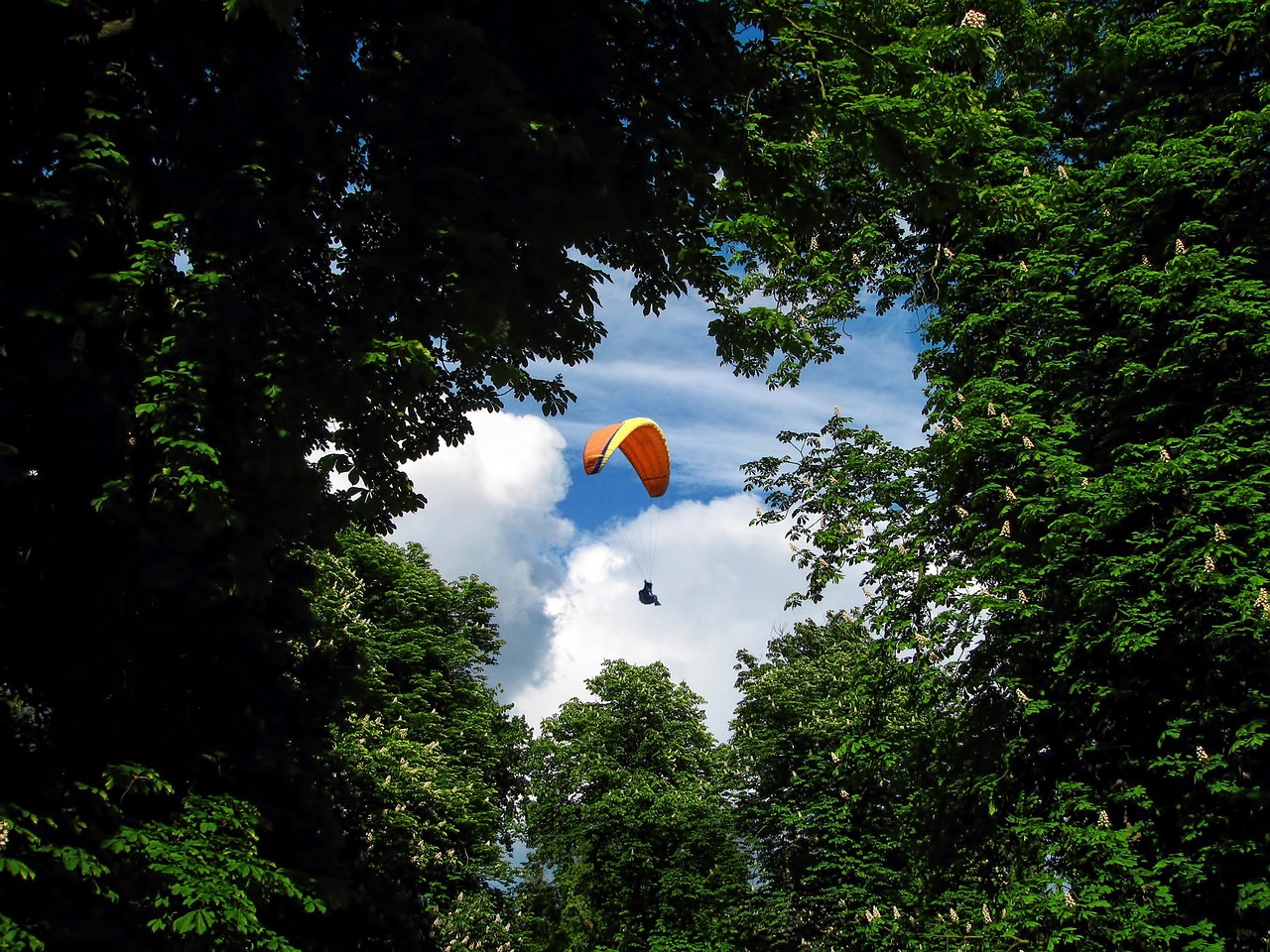
Human Error
When it comes to skydiving, the thrill of jumping from an airplane at thousands of feet can be exhilarating, but it also comes with its fair share of risks. One of the most significant contributors to those risks is . Did you know that a large percentage of skydiving accidents can be traced back to mistakes made by the jumpers themselves? It’s true! The adrenaline rush and the sheer excitement of free-falling can lead to split-second decisions that might not always be the best ones.
Skydiving requires not only physical skill but also mental acuity. As jumpers, we need to be aware of our surroundings and make quick decisions based on the conditions we encounter. Unfortunately, the pressure of the moment can cloud judgment. For instance, a skydiver may misjudge their altitude and deploy their parachute too late, leading to dangerous situations. This highlights the necessity of proper training and preparation.
One common mistake is improper training. New skydivers often underestimate the importance of thorough training programs. Without adequate instruction, they may not learn crucial skills such as how to handle unexpected situations or how to properly use their equipment. For instance, a novice jumper might forget to check their parachute’s deployment system or fail to practice emergency procedures, which can be catastrophic. Therefore, it’s essential for all jumpers to undergo certified training to ensure they are well-prepared for their jumps.
Moreover, decision-making under pressure can lead to serious consequences. Imagine you’re soaring through the sky, and suddenly, you realize you’re descending faster than expected due to a strong downdraft. In that moment, your heart races, and your mind is racing with thoughts. Do you pull the parachute now or wait a moment longer? Stress can severely impact a skydiver’s ability to make sound decisions. Training that incorporates simulated high-pressure scenarios can help prepare jumpers to remain calm and collected, even when the stakes are high.
To mitigate the risks associated with human error, it’s crucial to foster a culture of safety within the skydiving community. This includes:
- Regularly refreshing training and skills.
- Participating in safety briefings before each jump.
- Encouraging open communication among jumpers and instructors.
In conclusion, while skydiving is undeniably thrilling, it’s vital to recognize the role of human error in the equation. By committing to proper training, practicing decision-making under pressure, and fostering a culture of safety, skydivers can significantly reduce the risks associated with this exhilarating sport. Remember, every jump is a chance to improve and learn, so let’s make each one as safe as possible!
Q: What is the most common cause of accidents in skydiving?
A: Human error is often cited as the leading cause of skydiving accidents, with factors like improper training and decision-making under pressure playing significant roles.
Q: How can I ensure I am properly trained for skydiving?
A: It is essential to enroll in a certified training program that covers all aspects of skydiving, including emergency procedures, equipment checks, and decision-making strategies.
Q: What should I do if I feel pressured during a jump?
A: If you find yourself feeling stressed during a jump, it’s crucial to focus on your training and practice deep breathing techniques to help calm your nerves. Remember that staying calm can lead to better decision-making.

Improper Training
When it comes to skydiving, proper training is not just a recommendation; it's a necessity. Think about it: you're jumping out of an airplane at thousands of feet above the ground! Without the right training, even the smallest mistake can lead to serious consequences. Unfortunately, many novice jumpers underestimate the importance of thorough training and certification programs, leading to a higher risk of accidents.
Improper training can manifest in various ways. For instance, some jumpers may skip essential ground school sessions, where they learn about equipment, emergency procedures, and body positioning during freefall. Others might rush through their jumps without fully understanding how to handle their parachute or execute a safe landing. This lack of foundational knowledge can create a dangerous scenario in the sky.
Moreover, the psychological aspect of skydiving cannot be overlooked. New jumpers often experience anxiety, which can cloud their judgment and lead to poor decision-making. Without adequate training, they may not learn how to manage their stress levels effectively. As a result, they might panic in situations where calmness and clear thinking are crucial. This is why a structured training program is essential, as it not only teaches technical skills but also prepares jumpers mentally for the challenges they may face.
To illustrate the importance of proper training, consider the following table that highlights the differences between well-trained and improperly trained jumpers:
| Aspect | Well-Trained Jumper | Improperly Trained Jumper |
|---|---|---|
| Knowledge of Equipment | Thorough understanding of gear and emergency procedures | Limited knowledge, may skip critical steps |
| Decision Making | Calm and collected under pressure | Panic in stressful situations |
| Preparation | Follows a structured training program | Rushed or incomplete training |
| Safety Awareness | Proactively assesses risks and weather conditions | Ignores potential hazards |
It's also worth noting that many skydiving facilities have strict certification requirements to ensure all jumpers are adequately trained. These programs typically include ground school, tandem jumps with experienced instructors, and solo jumps under supervision. By adhering to these guidelines, skydivers can significantly reduce their risk of accidents and enhance their overall experience.
In conclusion, the importance of proper training in skydiving cannot be overstated. It lays the groundwork for not only a successful jump but also a safe one. Jumpers who invest time in their training will be better equipped to handle the challenges of skydiving, making the experience not only thrilling but also safe.
- What is the minimum training required for skydiving? Most skydiving centers require at least a few hours of ground school and a tandem jump with an instructor before allowing solo jumps.
- Can I skydive without prior experience? Yes, tandem skydiving allows you to jump with an experienced instructor, but you still need some basic training.
- What should I do if I feel anxious before jumping? It's completely normal to feel anxious. Speak to your instructor, who can provide techniques to manage your anxiety.
- How can I ensure I'm receiving proper training? Always choose a reputable skydiving center that offers certified training programs and experienced instructors.
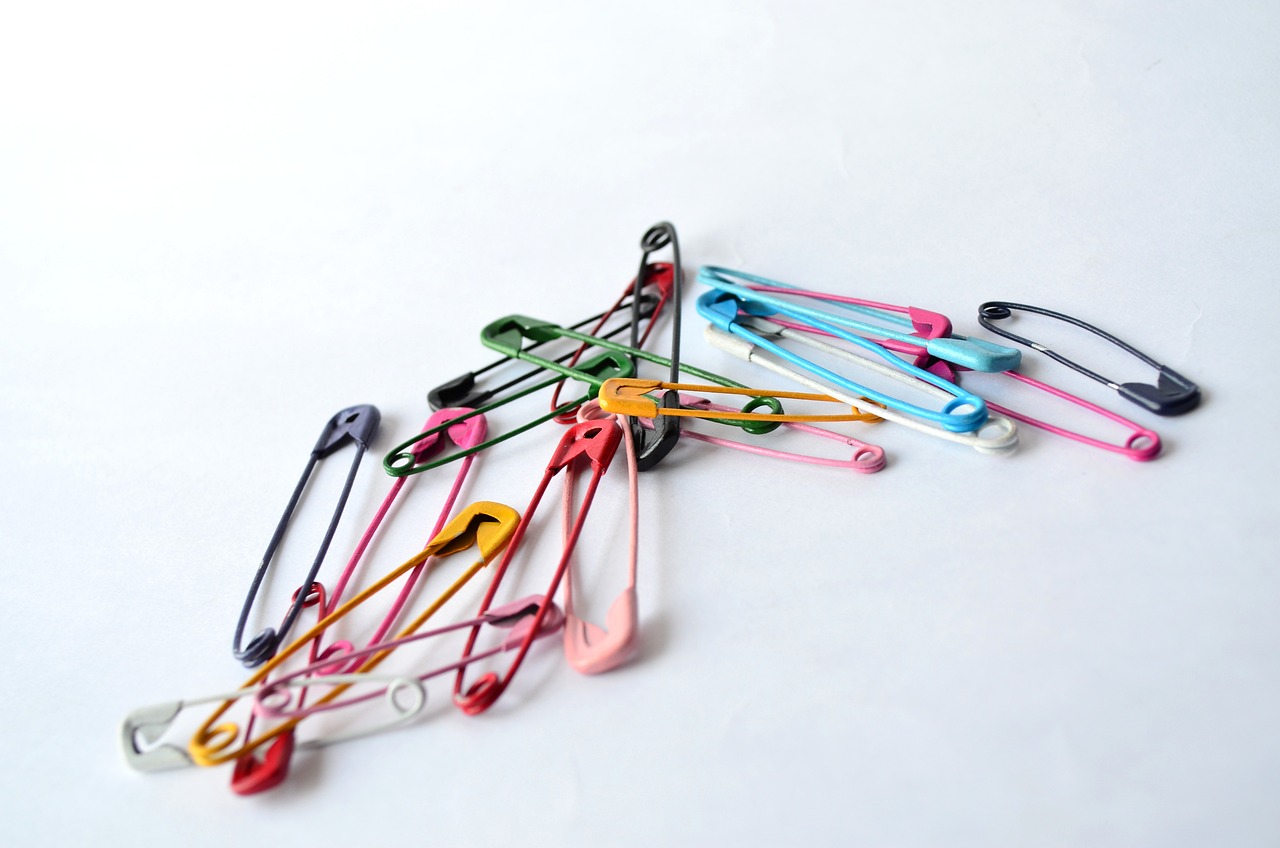
Decision-Making Under Pressure
Skydiving is not just about the thrill of free-falling through the sky; it’s also a test of mental resilience and quick decision-making. When you’re suspended thousands of feet above the ground, the pressure is on, and every second counts. How do you respond when things don’t go according to plan? This is where the true challenge lies. Imagine you’re in free fall, and suddenly, you notice that your parachute isn’t deploying as expected. What do you do? Panic can set in, but it’s crucial to remember that staying calm is key.
In high-pressure situations, the ability to make quick decisions can mean the difference between a safe landing and a dangerous outcome. Skydivers must be trained to handle unexpected scenarios, such as equipment failure or sudden changes in weather. This is why mental preparedness is just as important as physical training. It’s not enough to know how to jump; you need to be equipped to handle the unexpected. The human brain can be a powerful ally, but under stress, it can also become your worst enemy.
One effective way to enhance decision-making skills is through simulation training. By practicing various emergency scenarios in a controlled environment, skydivers can develop a mental checklist of actions to take when faced with real-life challenges. During these simulations, participants can experience the pressure of a jump while still having the safety net of being on the ground. This method helps to build muscle memory and instills confidence, so when the time comes to act, the response is instinctual rather than reactive.
Moreover, it’s essential to understand that decision-making under pressure isn’t just about reacting; it’s also about anticipating potential problems. Experienced skydivers often develop a keen sense of awareness about their surroundings. They can identify signs of changing weather or unusual conditions that may affect their jump. This foresight allows them to make informed decisions long before they leave the plane, ultimately leading to safer jumps.
To further illustrate the importance of decision-making under pressure, let’s consider a few examples of common scenarios that skydivers might encounter:
- Malfunctioning Equipment: If a skydiver notices that their main parachute hasn’t deployed, they must quickly decide to pull the reserve parachute. This decision must be made within seconds.
- Weather Changes: If a skydiver sees storm clouds rolling in, they need to make a rapid assessment of whether to proceed with the jump or abort it altogether.
- Unexpected Obstacles: During descent, a skydiver may spot other jumpers or obstacles in the landing zone. Quick thinking is necessary to navigate safely.
In conclusion, decision-making under pressure is a vital component of skydiving safety. By combining thorough training, mental preparedness, and situational awareness, skydivers can enhance their ability to respond effectively in high-stress situations. Remember, the sky may be the limit, but your ability to think clearly and act decisively can keep you grounded in safety.
- What should I do if my parachute doesn't deploy?
Immediately pull your reserve parachute and follow your training protocols. - How can I improve my decision-making skills for skydiving?
Participate in simulation training and practice various emergency scenarios. - Is weather assessment important before a jump?
Absolutely! Understanding weather conditions can help you make informed decisions about your jump. - What are some common mistakes made by novice skydivers?
Common mistakes include not checking equipment properly, failing to assess weather conditions, and panicking during emergencies.
Frequently Asked Questions
- What are the common equipment malfunctions in skydiving?
Equipment malfunctions can range from parachute deployment issues to altimeter failures. A common problem is a pilot chute not deploying properly, which can prevent the main parachute from opening. Regular checks and maintenance of gear are essential to mitigate these risks.
- How does weather impact skydiving safety?
Weather conditions significantly influence jump safety. Factors like wind speed and visibility can affect how a jump is executed. For instance, high winds can alter a skydiver's trajectory and make landing difficult, while poor visibility can hinder a skydiver's ability to navigate safely.
- What should I know about jumping in thunderstorms?
Jumping in or near thunderstorms is extremely dangerous due to potential lightning strikes and turbulent winds. Always check weather forecasts and avoid scheduling jumps during stormy conditions to ensure safety.
- How can I recognize and handle crosswinds?
Crosswinds can complicate landing. Skydivers should be trained to recognize wind patterns and adjust their landing approaches accordingly. Practicing in controlled environments can help build this skill.
- What role does human error play in skydiving accidents?
Human error is a leading cause of skydiving incidents. Mistakes can stem from improper training, decision-making under pressure, or failing to follow safety protocols. Comprehensive training and experience are crucial to reducing these errors.
- Why is proper training essential for novice jumpers?
Proper training equips novice jumpers with the skills and knowledge needed to handle various situations during a jump. Certification programs ensure that jumpers understand safety protocols and can react appropriately in emergencies.
- How does stress affect decision-making while skydiving?
Skydiving can present high-pressure situations that may impair decision-making. Stress can lead to panic, which might cause a skydiver to make hasty or poor choices. Mental preparedness and practice can help manage stress effectively.


